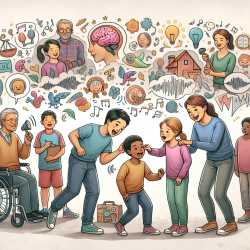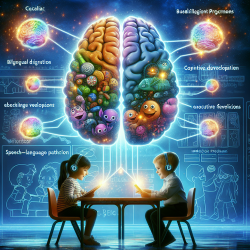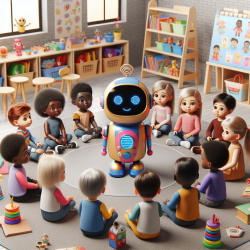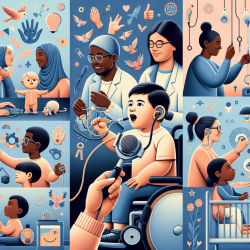Empowering Speech: Unlocking Potential in Children with Apraxia
In the realm of speech-language pathology, creating effective interventions for children with speech sound disorders (SSD) like Childhood Apraxia of Speech (CAS) requires a deep understanding of the underlying cognitive, linguistic, and motor abilities. Recent research by Carrigg et al. (2016) provides valuable insights into these abilities within a multigenerational family affected by CAS. This blog explores the study's findings and offers guidance for practitioners seeking to enhance their therapeutic strategies.
Understanding the Core Phenotype
The study by Carrigg et al. examined a large family with a history of severe SSD, identifying a core phenotype that distinguishes persistent from resolved cases. This phenotype is characterized by a multiple verbal trait disorder, encompassing impairments in speech, language, literacy, and phonological processing. The research highlights the importance of comprehensive phenotyping in understanding the behavioral manifestations of SSD and lays the groundwork for future genetic and neural studies.
Key Findings
- Speech and Language: Persistent cases exhibited severe speech impairments, particularly CAS, alongside expressive language disorders. These impairments were less pronounced in resolved cases.
- Cognitive Abilities: A significant difference in verbal IQ was noted between persistent and resolved cases, with persistent cases showing lower scores.
- Literacy and Phonological Processing: Persistent cases struggled with reading, spelling, and phonological memory tasks, highlighting the interconnectedness of these skills with speech disorders.
Implications for Practitioners
For speech-language pathologists, these findings underscore the necessity of a holistic approach to assessment and intervention. Here are some practical steps practitioners can take:
- Comprehensive Assessment: Evaluate not only speech but also cognitive, linguistic, and motor abilities to identify the core phenotype in each child.
- Tailored Interventions: Develop individualized therapy plans that address the specific deficits identified in the assessment, focusing on improving verbal IQ, language skills, and phonological processing.
- Family Involvement: Engage family members in the therapeutic process, as familial aggregation of SSD suggests a genetic component that may affect multiple family members.
- Continued Research: Encourage ongoing research into the genetic and neural underpinnings of CAS to refine diagnostic criteria and intervention strategies further.
Conclusion
The study by Carrigg et al. provides a robust framework for understanding the complex interplay of cognitive, linguistic, and motor abilities in children with CAS. By adopting a data-driven, comprehensive approach to assessment and intervention, practitioners can significantly enhance outcomes for children with persistent SSD. As we continue to unravel the genetic and neural factors contributing to these disorders, our ability to tailor interventions to individual needs will only improve.
To read the original research paper, please follow this link: Cognitive, Linguistic, and Motor Abilities in a Multigenerational Family with Childhood Apraxia of Speech.










